Are you planning a joint trip with your family or friends and need to navigate the intricate world of embassy permissions? Writing a letter to secure travel authorization can seem daunting, but with the right approach, it becomes a straightforward task. This guide will walk you through a simple letter template that you can customize to fit your specific needs. Ready to learn how to craft the perfect letter for your embassy travel permission? Let's dive in!
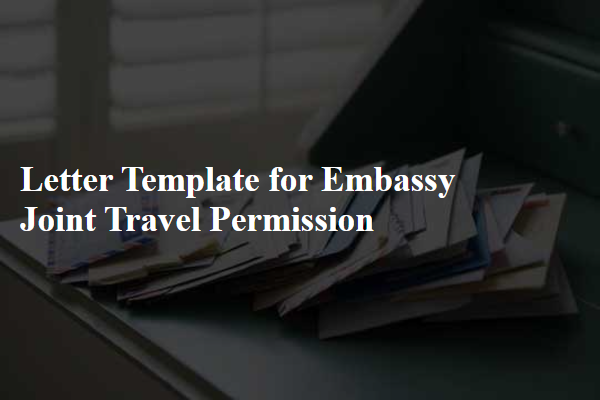
Clear Identification of Travelers
Joint travel permission for minors often requires clear identification to ensure safety during international travel. Essential details include full legal names, passport numbers, and birth dates of each traveler, particularly minors. For example, the minor's name (John Smith), passport number (123456789), and birth date (January 1, 2015) should be highlighted. Accompanying adults must also provide identification, including full names, passport details, and relationship to the minor. Clear identification simplifies verification at border controls and enhances the security of the travel experience. Providing a list of travelers along with accompanying documentation can facilitate smoother processing from embassy officials and airlines.
Purpose of Travel
Travel permission for the purpose of family visitation or vacation is often essential when traveling abroad. Joint travel can include parents, children, or spouses. Destination countries may require specific documentation such as visas, proof of relationship, and financial stability. Purpose-driven travel, especially to tourist destinations like Paris or Tokyo, necessitates providing itineraries outlining key activities and accommodations. Countries with strict immigration policies (such as the United States or Canada) may require letters of consent from guardians for minors. Clear communication with the embassy regarding the intention of the trip, duration of stay, and list of accompanying travelers is crucial for smooth processing.
Detailed Itinerary
Creating a detailed itinerary for a joint travel permission request to an embassy requires specificity about the trip's dates, locations, activities, and purpose. The itinerary should cover each day of travel with essential details. Day 1: Departure from City A (example: New York City) on March 1, 2024, at 10:00 AM. Arrive in City B (example: London) at 2:00 PM local time. Accommodation at The Grand London Hotel, 123 Queen St, London. Evening sightseeing tour, visiting the iconic Big Ben and the Houses of Parliament. Day 2: March 2, 2024, breakfast at the hotel. Visit the British Museum, with an overview of historical artifacts from around the world. Lunch thereafter at a local cafe. Afternoon visit to the London Eye for panoramic views of the city. Return to accommodation for dinner. Day 3: March 3, 2024, travel to City C (example: Paris) via Eurostar, departing at 9:00 AM. Arrive at Gare du Nord at 11:17 AM. Check into Hotel Le Marais, located at 456 Rue de Rivoli. Afternoon visit to the Louvre Museum. Evening dinner along the Seine River. Day 4: March 4, 2024, full day in Paris. Morning visit to the Eiffel Tower. Lunch at a nearby restaurant. Afternoon stroll through the Champs-Elysees and the Arc de Triomphe. Return to hotel for the night. Day 5: March 5, 2024, overnight travel back to City A via late-night flight departing at 10:00 PM. Arrive back at City A on March 6, 2024, at 6:00 AM. Include this itinerary along with the necessary identification documents to facilitate smooth processing at the embassy for joint travel permission.
Contact Information
When seeking joint travel permission from an embassy, specific details must be included for clarity and efficiency. Essential contact information includes full names of all travelers, physical addresses (city, state, postal code), and email addresses for direct communication. Additionally, phone numbers should be provided for immediate inquiries or confirmations. Important events such as travel dates (departure and return) and the destinations (city and country names) should also be clearly outlined. If applicable, visa details, passport numbers, and any references to previously issued documents or correspondence with the embassy should be noted to facilitate the process. Ensuring all this information is complete enhances the likelihood of a smooth application process.
Official Authorization and Signatures
Joint travel permission from an embassy typically requires official authorization and specific signatures to ensure compliance with legal and diplomatic protocols. This authorization may include elements such as the names of applicants, their passport numbers, travel dates, and destination countries. Furthermore, embassies often require verification of parental or guardian consent for minors traveling abroad. Depending on the country, additional documentation may be deemed necessary, including proof of relationship, financial statements, and travel itineraries. Dates of authorization are crucial for validating the granted permission, while the presence of official stamps or seals enhances the document's legitimacy.
Letter Template For Embassy Joint Travel Permission Samples
Letter template of agreement for joint travel document required by embassy.
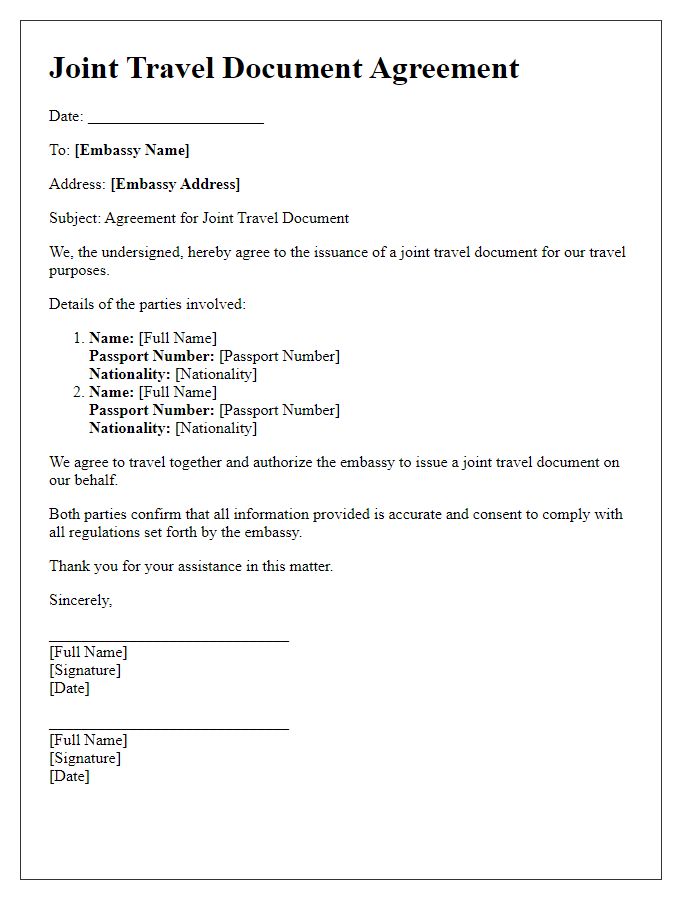

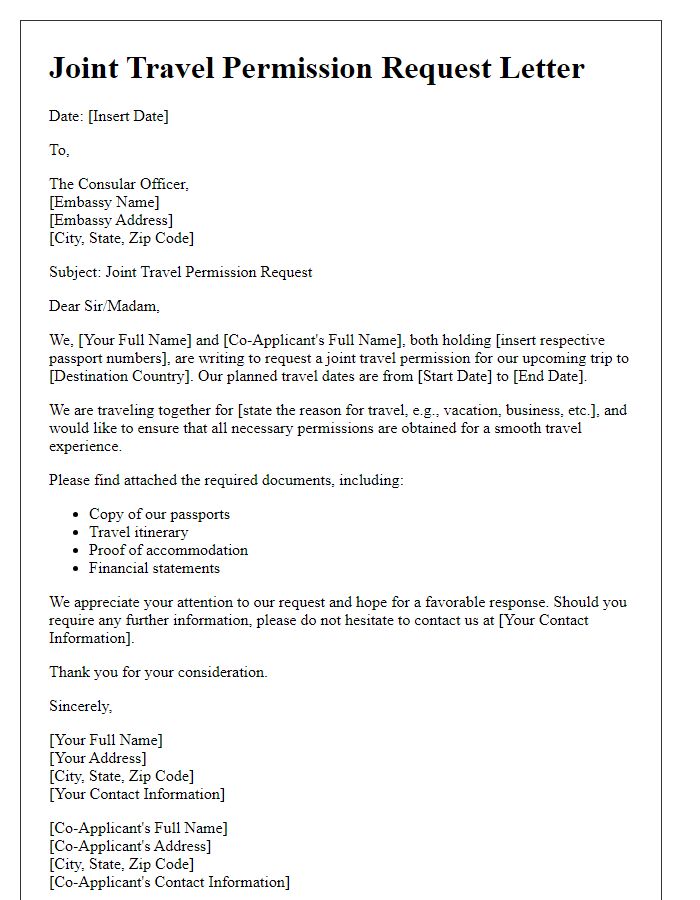
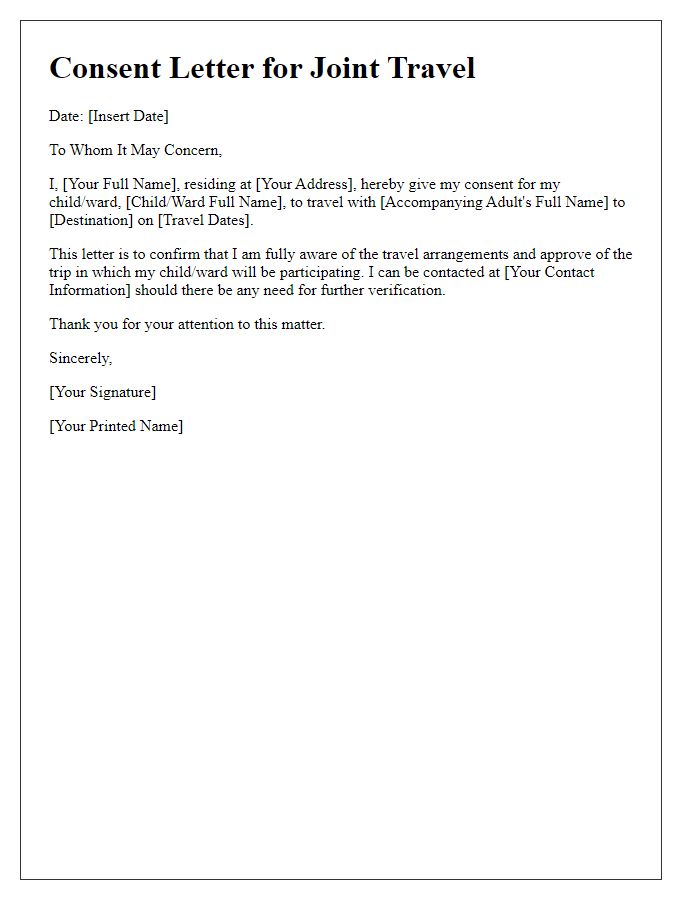
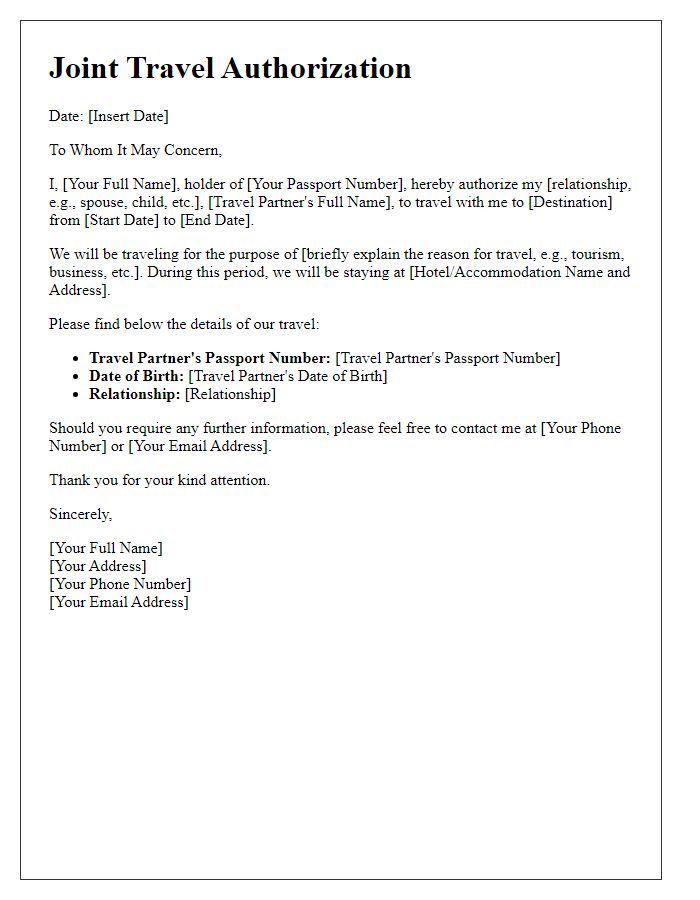
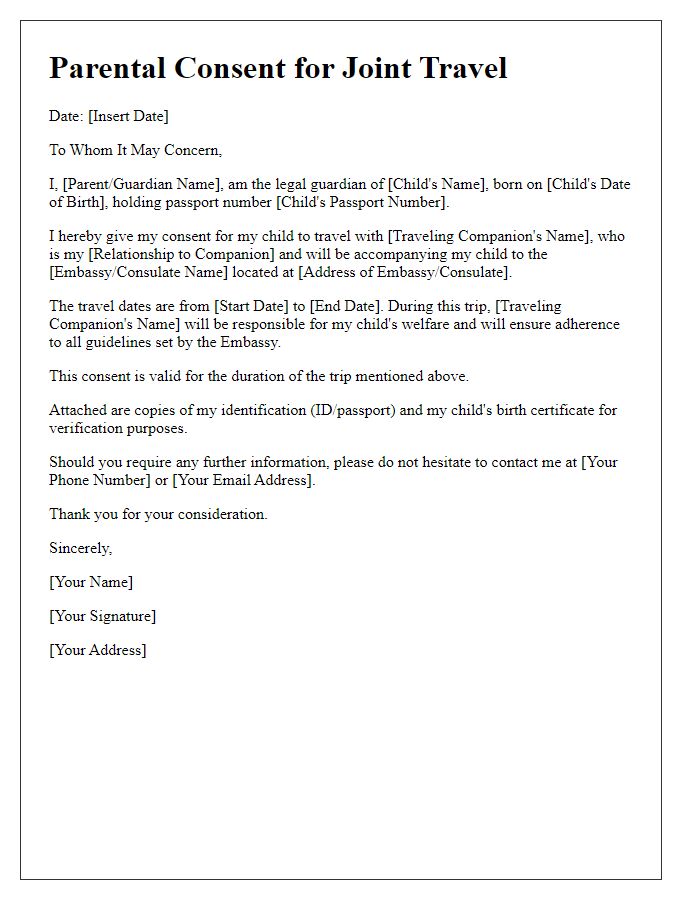
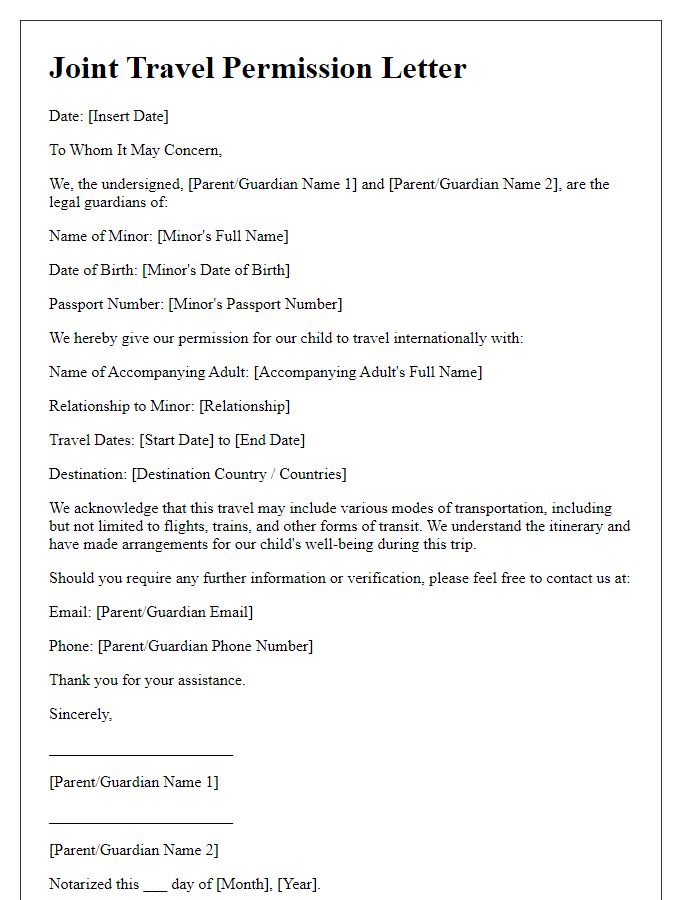
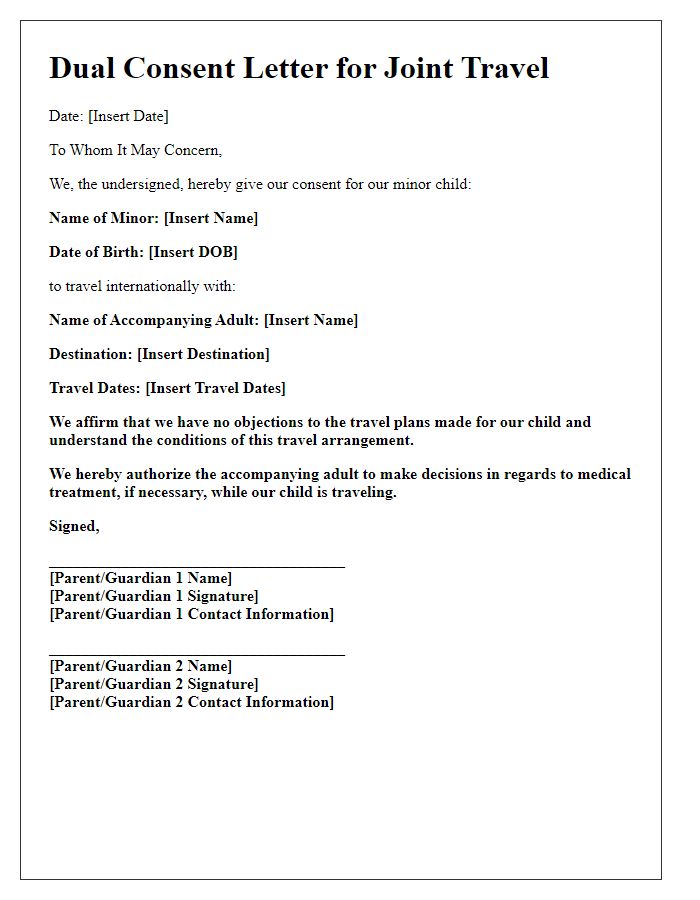

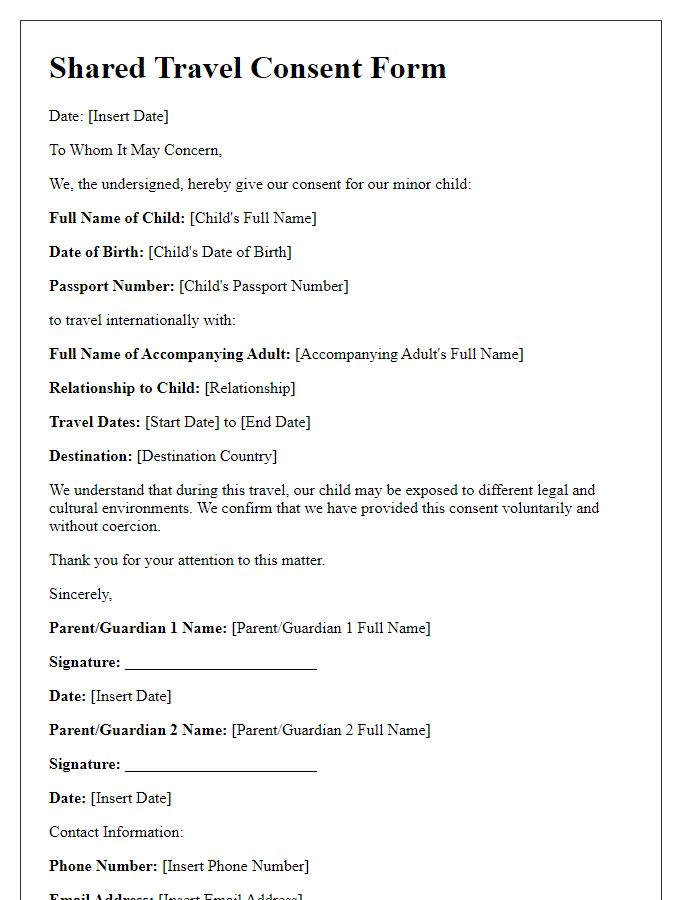
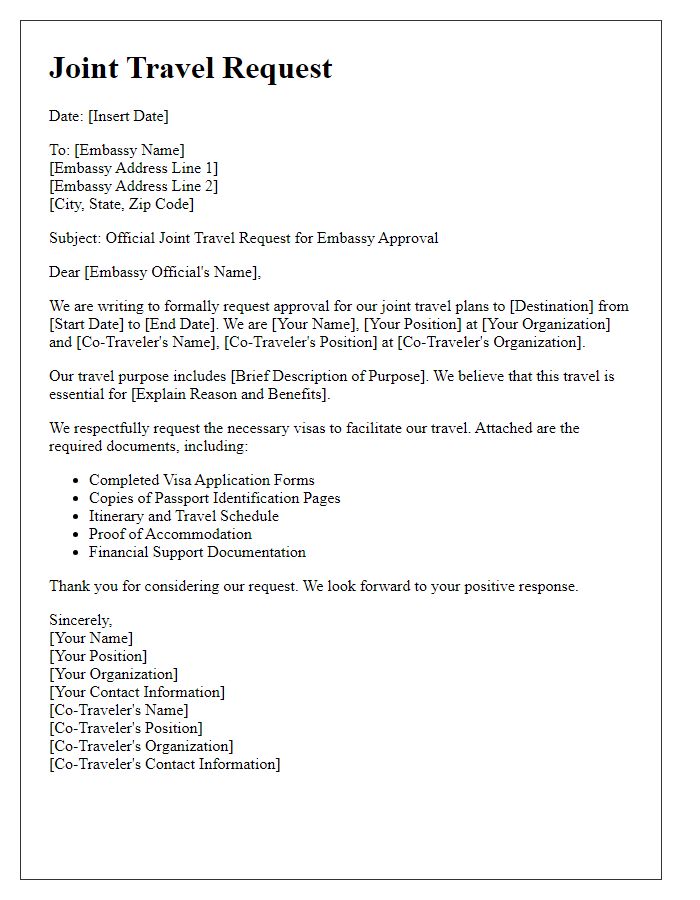

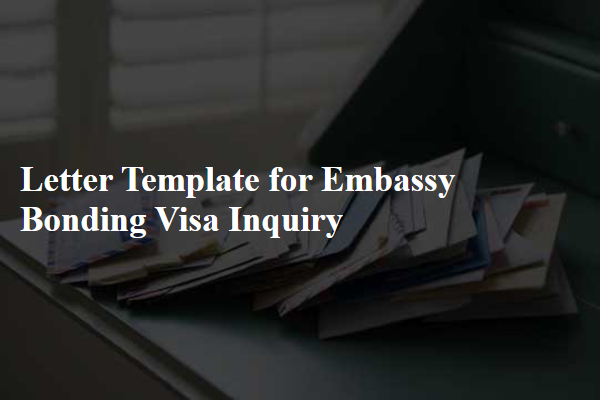
Comments